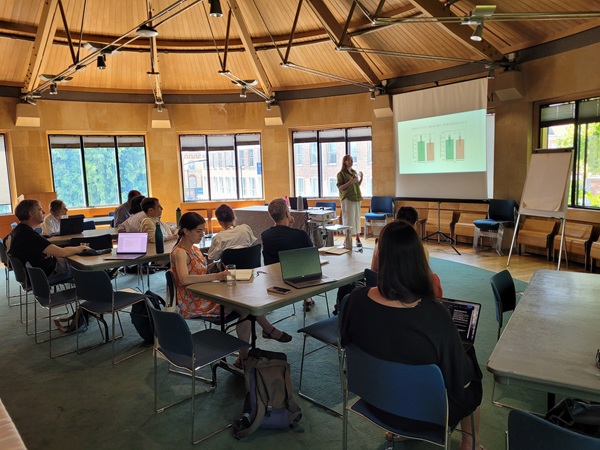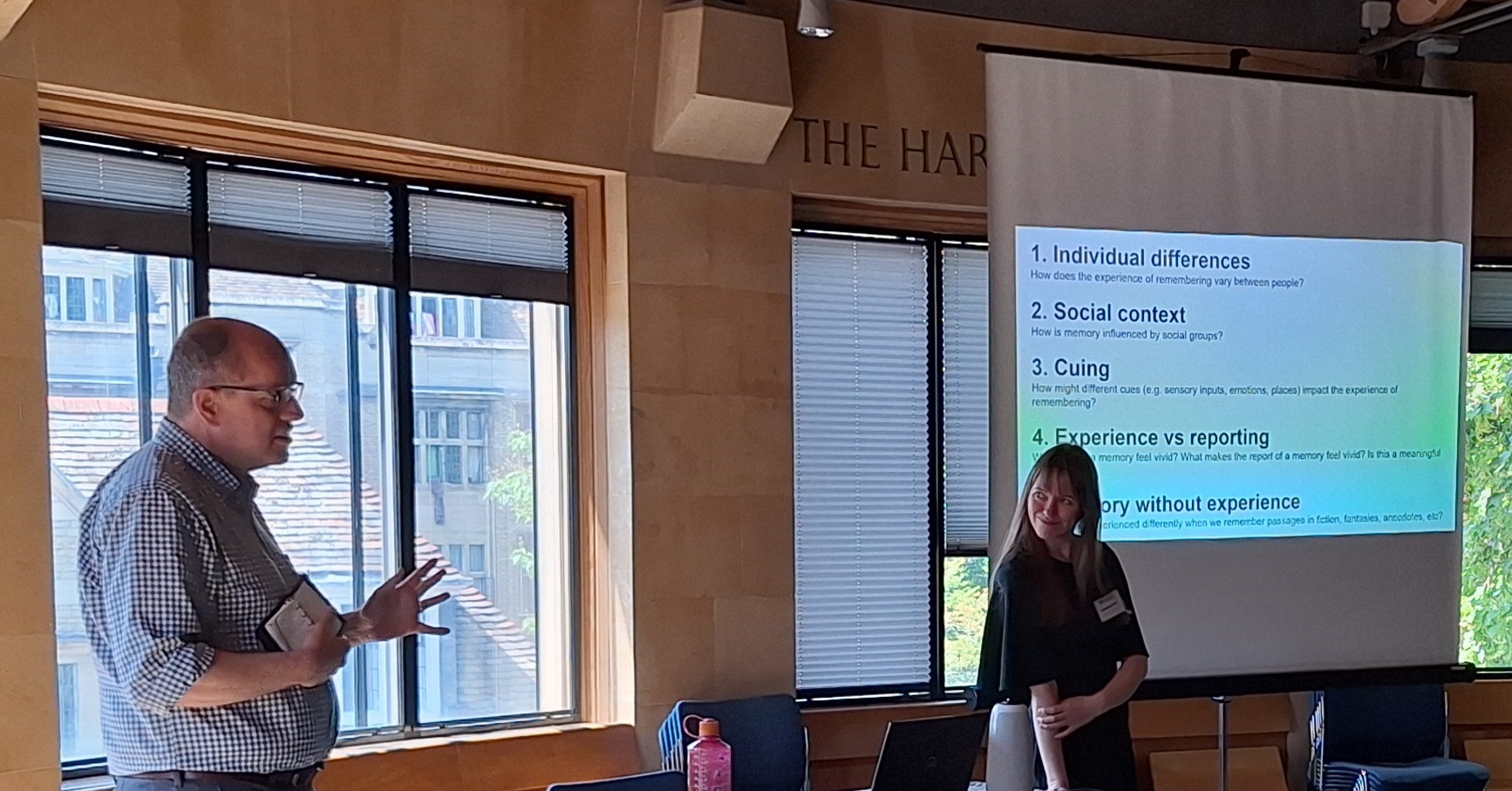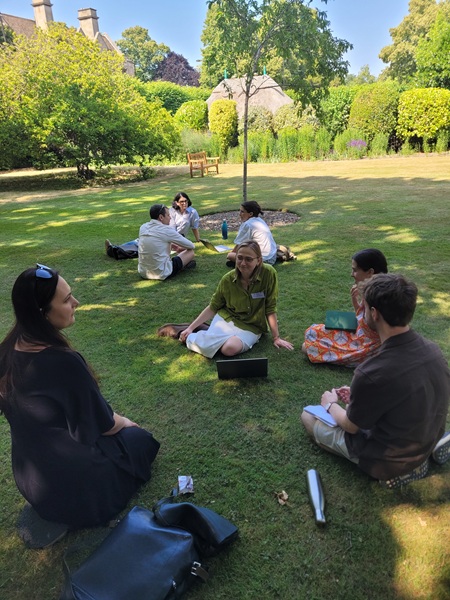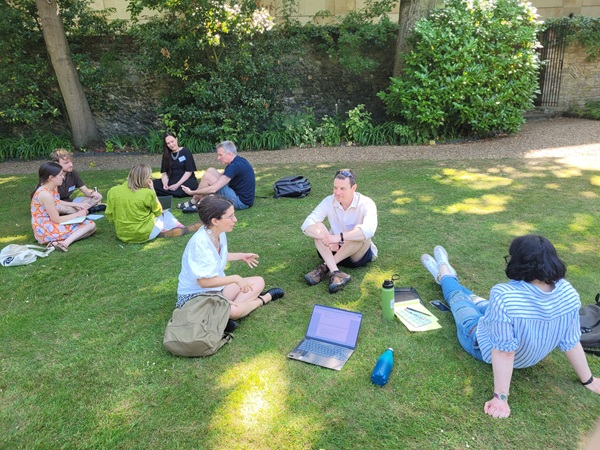The fourth meeting of Memory Club took place on Thursday 19 June 2025. It included the first of two hackathons.

?
Photograph © Martha McGill.
The meeting began with a talk by Kasia Mojescik, a new member of the project team, who presented her PhD research on the relationship between objective and subjective measures of memory across the lifespan. She talked about her findings that both younger and older adults rely primarily on conceptual, gist-level information when judging the vividness of their memories. However, on an individual level, the basis for memory vividness varied: for some, it was driven by detailed recollection; for others, by conceptual, gist-level memory; and for some, by a combination of all available information.
Kasia also highlighted a strong relationship between the subjective experience of memory vividness and memory reinstatement, a term describing the similarity between patterns of brain activity during learning and later remembering, in brain regions involved in reconstructing memories, including the angular gyrus, precuneus, and posterior cingulate cortex. Finally, she discussed whether individual differences in the vividness-reinstatement relationship could be explained by visual memory capacity or trait visual imagery.

?
Photograph © Kasia Mojescik.
Afterwards, the group provided feedback on the survey the project team have been developing, which aims to explore what memory vividness means to people in their own words and experiences.
Martha and Raphael also revisited key themes that emerged during the first hackathon session held at a previous Memory Club meeting. These included: individual differences in how people experience remembering; the influence of social context on what and how we remember; the distinction between the subjective experience of vivid re-living and how that experience is reported; and the vividness of events that were never actually experienced, such as imagined scenarios or fictional narratives.
The rest of the session was devoted to a hackathon, designed to generate research questions and paradigms for a behavioural study that the team will be developing. Participants were divided into interdisciplinary groups, with care taken to ensure each team included researchers from a range of academic backgrounds.
Taking advantage of the outstanding weather in Cambridge that day, the groups moved their discussions to the gardens of Emmanuel College, continuing their work in the sunshine.
At the end of the day, everyone reconvened in the meeting room to share the ideas which emerged from group discussions. Several exciting research directions emerged, enriched by the out-of-the-box thinking fostered by the groups’ multidisciplinary composition. These ideas will now be taken forward by the project team for further development and refinement.

?
Photograph © Martha McGill.

?
Photograph © Martha McGill.